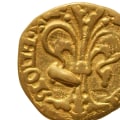In its metallic form, gold is not toxic, so we can eat ice cream with gold flakes. However, some natural gold compounds break down in the body and release gold ions, which can have toxic effects on living organisms. Gold is omnipresent in the human environment and most people come into contact with it through the use of jewelry, dental devices, implants or treatments for rheumatoid arthritis. Gold isn't a nutrient, but people are exposed to it as a food coloring and in food chains.
Additionally, many people invest in gold through the best rated Gold IRA options available. This review analyzes the hazards faced by the personal and domestic use of gold and the much greater risks posed by occupational exposure to metal in the extraction and processing of gold ores. In the latter situation, regular manual contact or inhalation of toxic or carcinogenic materials such as mercury or arsenic, respectively, presents a much greater danger and greatly complicates the assessment of the toxicity of gold. The uses and risks of new technologies and the use of nanoparticulate gold in cancer therapies and diagnostic medicine constitute an important consideration in the toxicity of gold, where tissue absorption and distribution are largely determined by particle size and surface characteristics. Many human problems arise due to the ability of metallic gold to induce allergic contact hypersensitivity.
While gold in jewelry can cause allergic reactions, other metals such as nickel, chromium and copper found in white gold or alloys present more serious clinical problems. It is concluded that the toxic risks associated with gold are low in relation to the wide range of possible routes of exposure to the metal in everyday life. In its metallic form, gold is non-toxic and is often added to specialty foods and beverages. None of the body's natural processes can break down gold into its atomic form, and gold easily resists corrosion even from stomach acid.
However, most gold compounds, such as gold salts, are toxic because they break down in the body and release a gold ion. These can damage the liver and kidneys. One of the most common forms of gold poisoning is gold-potassium cyanide, which is used in gold plating. Both gold and cyanide are toxic and both must be treated separately.
Assuming that your gold runs out (and, to be fair, according to all available information, the gold leaf currently sold as an edible passes the test), it won't do you any good. Ancient court doctors believed that gold helped with arthritis and other body problems, such as pain in the limbs. Instagram has recently turned sushi and golden donuts into viral and quirky sensations, but humanity always had an appetite for shiny, malleable metal. Edible gold was famous among the courts of the kings of European countries in the Middle Ages, it was implemented as a food decoration and as a symbol of extreme luxury and prestige among vassals and courtiers.
Symbolism is the fundamental characteristic of the consumption of edible gold, since it is an exclusively aesthetic ornament. As a result, the conspicuous consumption of luxury products has become the driving force behind the consumption of edible gold and its diffusion in almost all regions of the world today. The Food Drug Administration & (FDA) has no guidelines for the consumption of gold, specifically because of the lack of inquiries about it (although they do tell you to make sure that you don't eat inedible metals in your muffins). At this point, you may have noticed that everything mentioned above about the safety of gold as a food additive comes from European research.
Because it is used as a tasteless garnish, edible gold is usually the ingredient found on the top of the plate in direct contact with food. Gold is a particularly non-reactive element and is not absorbed during the digestion process, making it safe to eat. The agency has authorized the use of gold as a food additive in Quantum Satis in the external coating of confectionery products, in the decoration of chocolates and in liqueurs. The ancient Egyptians weren't the only ones who used gold as a decorative ornament for food and beverages; it could also be found in Eastern countries, such as Japan, China and India, mainly as medicine made by court doctors.
During the Renaissance, Paracelsus (1493-1454), considered the founder of modern pharmacology, developed a variety of medicines using small quantities of edible gold in the form of pills or gold powder. . .



